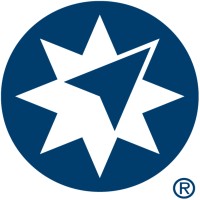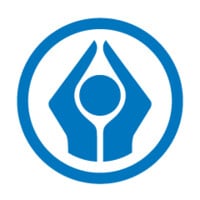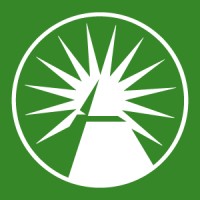
PT. Finansia Multi Finance Company Cyber Security Posture
linkedin.comPT Finansia Multi Finance (“FMF” or “the Company”) was founded in 1994 by a consortium of local banking executives – including the current President Director. FMF received its multifinance licence in 1994 and is fully licenced to conduct a full range of multifinance activities including consumer finance, leasing, factoring and credit cards. Today, FMF and its kreditplus brand are established as leading players within the multifinance sector with a focus on the used motorcycle financing, used car financing and white goods financing segments. As at 30 June 2014, FMF finances 772,234 customers through a proprietary distribution network of 313 branches / POS outlets and supported by a workforce of 13,682 employees. On its establishment, FMF adopted a dual focus on both the retail and commercial segment largely in response to the opportunities available in the market. Following the Asian Financial Crisis (“AFC”), FMF, like many other financial institutions in Indonesia, adjusted its strategic business model and risk management framework to reflect lessons learnt over the period. Over its 20 years of operation, FMF has weathered the course of a number of credit cycles and financial crises through a willingness and flexibility to adapt its business model and practices in response to shifting regulatory and operating environments. This adaptability has provided FMF with valuable operating experience within a number of different business segments and product groups across both the retail and commercial markets.
PFMF Company Details
pt-finansia-multi-finance
10,001+ employees
15214
52
Financial Services
linkedin.com
8
PT._2891746
In-progress
Between 800 and 900
This score is AI-generated and less favored by cyber insurers, who prefer the TPRM score.
 PFMF Global Score
PFMF Global Score.png)

PT. Finansia Multi Finance Company Scoring based on AI Models
| Model Name | Date | Description | Current Score Difference | Score |
|---|---|---|---|---|
| AVERAGE-Industry | 03-12-2025 | This score represents the average cybersecurity rating of companies already scanned within the same industry. It provides a benchmark to compare an individual company's security posture against its industry peers. | N/A | Between 800 and 900 |
PT. Finansia Multi Finance Company Cyber Security News & History
| Entity | Type | Severity | Impact | Seen | Url ID | Details | View |
|---|
PT. Finansia Multi Finance Company Subsidiaries

PT Finansia Multi Finance (“FMF” or “the Company”) was founded in 1994 by a consortium of local banking executives – including the current President Director. FMF received its multifinance licence in 1994 and is fully licenced to conduct a full range of multifinance activities including consumer finance, leasing, factoring and credit cards. Today, FMF and its kreditplus brand are established as leading players within the multifinance sector with a focus on the used motorcycle financing, used car financing and white goods financing segments. As at 30 June 2014, FMF finances 772,234 customers through a proprietary distribution network of 313 branches / POS outlets and supported by a workforce of 13,682 employees. On its establishment, FMF adopted a dual focus on both the retail and commercial segment largely in response to the opportunities available in the market. Following the Asian Financial Crisis (“AFC”), FMF, like many other financial institutions in Indonesia, adjusted its strategic business model and risk management framework to reflect lessons learnt over the period. Over its 20 years of operation, FMF has weathered the course of a number of credit cycles and financial crises through a willingness and flexibility to adapt its business model and practices in response to shifting regulatory and operating environments. This adaptability has provided FMF with valuable operating experience within a number of different business segments and product groups across both the retail and commercial markets.
Access Data Using Our API

Get company history
.png)
PFMF Cyber Security News
Ingram Micro Issues Statement Regarding Cybersecurity Incident
Ingram Micro recently identified ransomware on certain of its internal systems. Promptly after learning of the issue, the Company took steps to ...
Qantas attack reveals one phone call is all it takes to crack cybersecurity’s weakest link: humans
Other sectors also at risk from attacks, including healthcare, finance and telecommunications, expert warns.
FBI warns travelers of 'Scattered Spider' group targeting airlines
The FBI issued a public warning about a sophisticated criminal group that is hacking into the systems of major airlines.
3 Top Cybersecurity Stocks to Buy in July
Three of the best cybersecurity stocks you can buy in July are Check Point Software Technologies (CHKP 1.93%), International Business Machines ( ...
TIKA leads cybersecurity education for Syrian professionals | Daily Sabah
With the increasing global importance of cybersecurity, TIKA and MAPS conducted a foundational-level cybersecurity training at Damascus ...
Cyber Alert Karnataka: Cybersecurity Deficit Exposed as Attacks Surge
Digital Safety India: Karnataka faces Rs 2915 crore in cybercrime losses in 2024, exposing major cybersecurity gaps across sectors.
CrowdStrike, Cloudflare Stock Cashing In As Cybersecurity Needs Grow
CrowdStrike stock reached a new high after a breaking out of a base. Cybersecurity name Cloudflare and two others produce big gains.
CrowdStrike Remains Cybersecurity ‘Gold Standard:’ Analyst
A prominent Wall Street analyst says CrowdStrike is seeing 'increased momentum' in its business, suggesting the cybersecurity giant has ...
NightEagle APT Exploits Microsoft Exchange Flaw to Target China's Military and Tech Sectors
Cybersecurity researchers uncover NightEagle APT exploiting zero-day in Microsoft Exchange servers, targeting government, defense, ...

PFMF Similar Companies

NN Group
NN Group is an international financial services company, active in 10 countries, with a strong presence in a number of European countries and Japan. Our roots lie in the Netherlands, with a rich history of more than 175 years. With our 16,000 employees, NN Group provides retirement services, pensio

Ameriprise Financial Services, LLC
At Ameriprise Financial, we have helped our clients feel confident about their financial futures for more than 125 years. Our network of more than 10,000 financial advisors delivers personalized financial advice to help clients reach their goals. Ameriprise has corporate locations throughout the

National Agricultural Cooperative Federation
The NACF, or 'NongHyup' as it is called in Korean, was established to contribute to improve the economic, social and cultural status of farmers and contribute to the balanced development of the national economy. To meet these goals, we are engaged in Extension and Support Unit, Agribusiness Group, a

Sanlam
We’re a purpose-led financial services group headquartered in South Africa, operating across several selected global markets. With a legacy of over a century in the financial services industry, we offer a unique environment where innovation thrives and opportunities abound. Whether you're passionat

Ameriprise Financial Services, LLC
At Ameriprise Financial, we have been helping people feel more confident about their financial future for 130 years. With extensive investment advice, asset management and insurance capabilities and a nationwide network of approximately 10,000 financial advisors*, we have the strength and expertise

Fidelity Investments
Fidelity’s mission is to strengthen the financial well-being of our customers and deliver better outcomes for the clients and businesses we serve. Fidelity’s strength comes from the scale of our diversified, market-leading financial services businesses that serve individuals, families, employers, we

Frequently Asked Questions (FAQ) on Cybersecurity Incidents
PFMF CyberSecurity History Information
Total Incidents: According to Rankiteo, PFMF has faced 0 incidents in the past.
Incident Types: As of the current reporting period, PFMF has not encountered any cybersecurity incidents.
Total Financial Loss: The total financial loss from these incidents is estimated to be {total_financial_loss}.
Cybersecurity Posture: The company's overall cybersecurity posture is described as PT Finansia Multi Finance (“FMF” or “the Company”) was founded in 1994 by a consortium of local banking executives – including the current President Director. FMF received its multifinance licence in 1994 and is fully licenced to conduct a full range of multifinance activities including consumer finance, leasing, factoring and credit cards. Today, FMF and its kreditplus brand are established as leading players within the multifinance sector with a focus on the used motorcycle financing, used car financing and white goods financing segments. As at 30 June 2014, FMF finances 772,234 customers through a proprietary distribution network of 313 branches / POS outlets and supported by a workforce of 13,682 employees. On its establishment, FMF adopted a dual focus on both the retail and commercial segment largely in response to the opportunities available in the market. Following the Asian Financial Crisis (“AFC”), FMF, like many other financial institutions in Indonesia, adjusted its strategic business model and risk management framework to reflect lessons learnt over the period. Over its 20 years of operation, FMF has weathered the course of a number of credit cycles and financial crises through a willingness and flexibility to adapt its business model and practices in response to shifting regulatory and operating environments. This adaptability has provided FMF with valuable operating experience within a number of different business segments and product groups across both the retail and commercial markets..
Detection and Response: The company detects and responds to cybersecurity incidents through {description_of_detection_and_response_process}.
Incident Details
Incident 1: Ransomware Attack
Title: {Incident_Title}
Description: {Brief_description_of_the_incident}
Date Detected: {Detection_Date}
Date Publicly Disclosed: {Disclosure_Date}
Date Resolved: {Resolution_Date}
Type: {Type_of_Attack}
Attack Vector: {Attack_Vector}
Vulnerability Exploited: {Vulnerability}
Threat Actor: {Threat_Actor}
Motivation: {Motivation}
Incident 2: Data Breach
Title: {Incident_Title}
Description: {Brief_description_of_the_incident}
Date Detected: {Detection_Date}
Date Publicly Disclosed: {Disclosure_Date}
Date Resolved: {Resolution_Date}
Type: {Type_of_Attack}
Attack Vector: {Attack_Vector}
Vulnerability Exploited: {Vulnerability}
Threat Actor: {Threat_Actor}
Motivation: {Motivation}
Common Attack Types: As of now, the company has not encountered any reported incidents involving common cyberattacks.
Identification of Attack Vectors: The company identifies the attack vectors used in incidents through {description_of_identification_process}.
Impact of the Incidents
Incident 1: Ransomware Attack
Financial Loss: {Financial_Loss}
Data Compromised: {Data_Compromised}
Systems Affected: {Systems_Affected}
Downtime: {Downtime}
Operational Impact: {Operational_Impact}
Conversion Rate Impact: {Conversion_Rate_Impact}
Revenue Loss: {Revenue_Loss}
Customer Complaints: {Customer_Complaints}
Brand Reputation Impact: {Brand_Reputation_Impact}
Legal Liabilities: {Legal_Liabilities}
Identity Theft Risk: {Identity_Theft_Risk}
Payment Information Risk: {Payment_Information_Risk}
Incident 2: Data Breach
Financial Loss: {Financial_Loss}
Data Compromised: {Data_Compromised}
Systems Affected: {Systems_Affected}
Downtime: {Downtime}
Operational Impact: {Operational_Impact}
Conversion Rate Impact: {Conversion_Rate_Impact}
Revenue Loss: {Revenue_Loss}
Customer Complaints: {Customer_Complaints}
Brand Reputation Impact: {Brand_Reputation_Impact}
Legal Liabilities: {Legal_Liabilities}
Identity Theft Risk: {Identity_Theft_Risk}
Payment Information Risk: {Payment_Information_Risk}
Average Financial Loss: The average financial loss per incident is {average_financial_loss}.
Commonly Compromised Data Types: The types of data most commonly compromised in incidents are {list_of_commonly_compromised_data_types}.
Incident 1: Ransomware Attack
Entity Name: {Entity_Name}
Entity Type: {Entity_Type}
Industry: {Industry}
Location: {Location}
Size: {Size}
Customers Affected: {Customers_Affected}
Incident 2: Data Breach
Entity Name: {Entity_Name}
Entity Type: {Entity_Type}
Industry: {Industry}
Location: {Location}
Size: {Size}
Customers Affected: {Customers_Affected}
Response to the Incidents
Incident 1: Ransomware Attack
Incident Response Plan Activated: {Yes/No}
Third Party Assistance: {Yes/No}
Law Enforcement Notified: {Yes/No}
Containment Measures: {Containment_Measures}
Remediation Measures: {Remediation_Measures}
Recovery Measures: {Recovery_Measures}
Communication Strategy: {Communication_Strategy}
Adaptive Behavioral WAF: {Adaptive_Behavioral_WAF}
On-Demand Scrubbing Services: {On_Demand_Scrubbing_Services}
Network Segmentation: {Network_Segmentation}
Enhanced Monitoring: {Enhanced_Monitoring}
Incident 2: Data Breach
Incident Response Plan Activated: {Yes/No}
Third Party Assistance: {Yes/No}
Law Enforcement Notified: {Yes/No}
Containment Measures: {Containment_Measures}
Remediation Measures: {Remediation_Measures}
Recovery Measures: {Recovery_Measures}
Communication Strategy: {Communication_Strategy}
Adaptive Behavioral WAF: {Adaptive_Behavioral_WAF}
On-Demand Scrubbing Services: {On_Demand_Scrubbing_Services}
Network Segmentation: {Network_Segmentation}
Enhanced Monitoring: {Enhanced_Monitoring}
Incident Response Plan: The company's incident response plan is described as {description_of_incident_response_plan}.
Third-Party Assistance: The company involves third-party assistance in incident response through {description_of_third_party_involvement}.
Data Breach Information
Incident 2: Data Breach
Type of Data Compromised: {Type_of_Data}
Number of Records Exposed: {Number_of_Records}
Sensitivity of Data: {Sensitivity_of_Data}
Data Exfiltration: {Yes/No}
Data Encryption: {Yes/No}
File Types Exposed: {File_Types}
Personally Identifiable Information: {Yes/No}
Prevention of Data Exfiltration: The company takes the following measures to prevent data exfiltration: {description_of_prevention_measures}.
Handling of PII Incidents: The company handles incidents involving personally identifiable information (PII) through {description_of_handling_process}.
Ransomware Information
Incident 1: Ransomware Attack
Ransom Demanded: {Ransom_Amount}
Ransom Paid: {Ransom_Paid}
Ransomware Strain: {Ransomware_Strain}
Data Encryption: {Yes/No}
Data Exfiltration: {Yes/No}
Ransom Payment Policy: The company's policy on paying ransoms in ransomware incidents is described as {description_of_ransom_payment_policy}.
Data Recovery from Ransomware: The company recovers data encrypted by ransomware through {description_of_data_recovery_process}.
Regulatory Compliance
Incident 1: Ransomware Attack
Regulations Violated: {Regulations_Violated}
Fines Imposed: {Fines_Imposed}
Legal Actions: {Legal_Actions}
Regulatory Notifications: {Regulatory_Notifications}
Incident 2: Data Breach
Regulations Violated: {Regulations_Violated}
Fines Imposed: {Fines_Imposed}
Legal Actions: {Legal_Actions}
Regulatory Notifications: {Regulatory_Notifications}
Regulatory Frameworks: The company complies with the following regulatory frameworks regarding cybersecurity: {list_of_regulatory_frameworks}.
Ensuring Regulatory Compliance: The company ensures compliance with regulatory requirements through {description_of_compliance_measures}.
Lessons Learned and Recommendations
Incident 1: Ransomware Attack
Lessons Learned: {Lessons_Learned}
Incident 2: Data Breach
Lessons Learned: {Lessons_Learned}
Incident 1: Ransomware Attack
Recommendations: {Recommendations}
Incident 2: Data Breach
Recommendations: {Recommendations}
Key Lessons Learned: The key lessons learned from past incidents are {list_of_key_lessons_learned}.
Implemented Recommendations: The company has implemented the following recommendations to improve cybersecurity: {list_of_implemented_recommendations}.
References
Additional Resources: Stakeholders can find additional resources on cybersecurity best practices at {list_of_additional_resources}.
Investigation Status
Incident 1: Ransomware Attack
Investigation Status: {Investigation_Status}
Incident 2: Data Breach
Investigation Status: {Investigation_Status}
Communication of Investigation Status: The company communicates the status of incident investigations to stakeholders through {description_of_communication_process}.
Stakeholder and Customer Advisories
Incident 1: Ransomware Attack
Stakeholder Advisories: {Stakeholder_Advisories}
Customer Advisories: {Customer_Advisories}
Incident 2: Data Breach
Stakeholder Advisories: {Stakeholder_Advisories}
Customer Advisories: {Customer_Advisories}
Advisories Provided: The company provides the following advisories to stakeholders and customers following an incident: {description_of_advisories_provided}.
Initial Access Broker
Incident 1: Ransomware Attack
Entry Point: {Entry_Point}
Reconnaissance Period: {Reconnaissance_Period}
Backdoors Established: {Backdoors_Established}
High Value Targets: {High_Value_Targets}
Data Sold on Dark Web: {Yes/No}
Incident 2: Data Breach
Entry Point: {Entry_Point}
Reconnaissance Period: {Reconnaissance_Period}
Backdoors Established: {Backdoors_Established}
High Value Targets: {High_Value_Targets}
Data Sold on Dark Web: {Yes/No}
Monitoring and Mitigation of Initial Access Brokers: The company monitors and mitigates the activities of initial access brokers through {description_of_monitoring_and_mitigation_measures}.
Post-Incident Analysis
Incident 1: Ransomware Attack
Root Causes: {Root_Causes}
Corrective Actions: {Corrective_Actions}
Incident 2: Data Breach
Root Causes: {Root_Causes}
Corrective Actions: {Corrective_Actions}
Post-Incident Analysis Process: The company's process for conducting post-incident analysis is described as {description_of_post_incident_analysis_process}.
Corrective Actions Taken: The company has taken the following corrective actions based on post-incident analysis: {list_of_corrective_actions_taken}.
Additional Questions
General Information
Ransom Payment History: The company has {paid/not_paid} ransoms in the past.
Last Ransom Demanded: The amount of the last ransom demanded was {last_ransom_amount}.
Last Attacking Group: The attacking group in the last incident was {last_attacking_group}.
Incident Details
Most Recent Incident Detected: The most recent incident detected was on {most_recent_incident_detected_date}.
Most Recent Incident Publicly Disclosed: The most recent incident publicly disclosed was on {most_recent_incident_publicly_disclosed_date}.
Most Recent Incident Resolved: The most recent incident resolved was on {most_recent_incident_resolved_date}.
Impact of the Incidents
Highest Financial Loss: The highest financial loss from an incident was {highest_financial_loss}.
Most Significant Data Compromised: The most significant data compromised in an incident was {most_significant_data_compromised}.
Most Significant System Affected: The most significant system affected in an incident was {most_significant_system_affected}.
Response to the Incidents
Third-Party Assistance in Most Recent Incident: The third-party assistance involved in the most recent incident was {third_party_assistance_in_most_recent_incident}.
Containment Measures in Most Recent Incident: The containment measures taken in the most recent incident were {containment_measures_in_most_recent_incident}.
Data Breach Information
Most Sensitive Data Compromised: The most sensitive data compromised in a breach was {most_sensitive_data_compromised}.
Number of Records Exposed: The number of records exposed in the most significant breach was {number_of_records_exposed}.
Ransomware Information
Highest Ransom Demanded: The highest ransom demanded in a ransomware incident was {highest_ransom_demanded}.
Highest Ransom Paid: The highest ransom paid in a ransomware incident was {highest_ransom_paid}.
Regulatory Compliance
Highest Fine Imposed: The highest fine imposed for a regulatory violation was {highest_fine_imposed}.
Most Significant Legal Action: The most significant legal action taken for a regulatory violation was {most_significant_legal_action}.
Lessons Learned and Recommendations
Most Significant Lesson Learned: The most significant lesson learned from past incidents was {most_significant_lesson_learned}.
Most Significant Recommendation Implemented: The most significant recommendation implemented to improve cybersecurity was {most_significant_recommendation_implemented}.
References
Most Recent Source: The most recent source of information about an incident is {most_recent_source}.
Most Recent URL for Additional Resources: The most recent URL for additional resources on cybersecurity best practices is {most_recent_url}.
Investigation Status
Current Status of Most Recent Investigation: The current status of the most recent investigation is {current_status_of_most_recent_investigation}.
Stakeholder and Customer Advisories
Most Recent Stakeholder Advisory: The most recent stakeholder advisory issued was {most_recent_stakeholder_advisory}.
Most Recent Customer Advisory: The most recent customer advisory issued was {most_recent_customer_advisory}.
Initial Access Broker
Most Recent Entry Point: The most recent entry point used by an initial access broker was {most_recent_entry_point}.
Most Recent Reconnaissance Period: The most recent reconnaissance period for an incident was {most_recent_reconnaissance_period}.
Post-Incident Analysis
Most Significant Root Cause: The most significant root cause identified in post-incident analysis was {most_significant_root_cause}.
Most Significant Corrective Action: The most significant corrective action taken based on post-incident analysis was {most_significant_corrective_action}.
What Do We Measure?
















Every week, Rankiteo analyzes billions of signals to give organizations a sharper, faster view of emerging risks. With deeper, more actionable intelligence at their fingertips, security teams can outpace threat actors, respond instantly to Zero-Day attacks, and dramatically shrink their risk exposure window.
These are some of the factors we use to calculate the overall score:
Identify exposed access points, detect misconfigured SSL certificates, and uncover vulnerabilities across the network infrastructure.
Gain visibility into the software components used within an organization to detect vulnerabilities, manage risk, and ensure supply chain security.
Monitor and manage all IT assets and their configurations to ensure accurate, real-time visibility across the company's technology environment.
Leverage real-time insights on active threats, malware campaigns, and emerging vulnerabilities to proactively defend against evolving cyberattacks.




